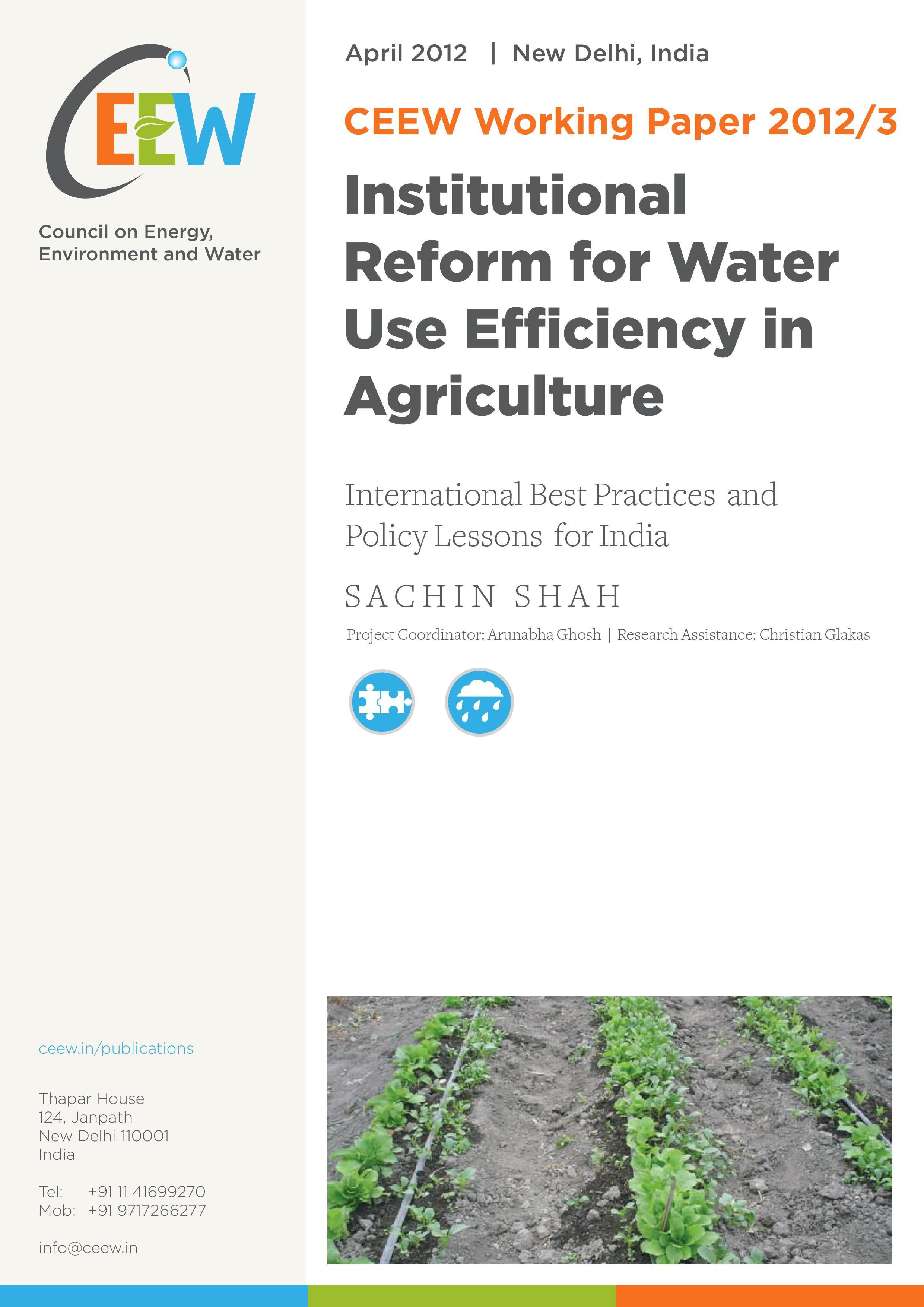



Sachin Shah
April 2012 |
Suggested Citation: Shah , Sachin. 2012.Institutional Reform for Water Use Efficiency in Agriculture: International Best Practices and Policy Lessons for India. New Delhi: Council on Energy, Environment and Water.
This paper outlines the alternative technical definitions of water use efficiency (WUE). It explains their weaknesses, and identifies comparative indicators that give a broad overview of the hydrological, agronomic, economic, financial, and environmental performance of irrigation systems. It sets up a framework that combines water availability, water use, and institutions and capacities as the three key indicators for comparing institutional reforms for WUE across countries. It explores these indicators using international case studies with varied institutional reform approaches and then defines the needs and priorities for India at different institutional levels. It recognises that this approach requires focusing on elements common to all systems such as water, land, and crop production. The paper ends by outlining three innovative institutional design options and policy recommendations focused on three issues: greater local participation in irrigation management, capacity building for water management decisions, and better understanding of hydrologic principles.
Drip irrigation technology is the most efficient and is used for a wide variety of crops, such as vegetables, flowers, and plantation crops. As of 2012, about 4,100 hectares in Maharashtra were irrigated with drip irrigation systems.

